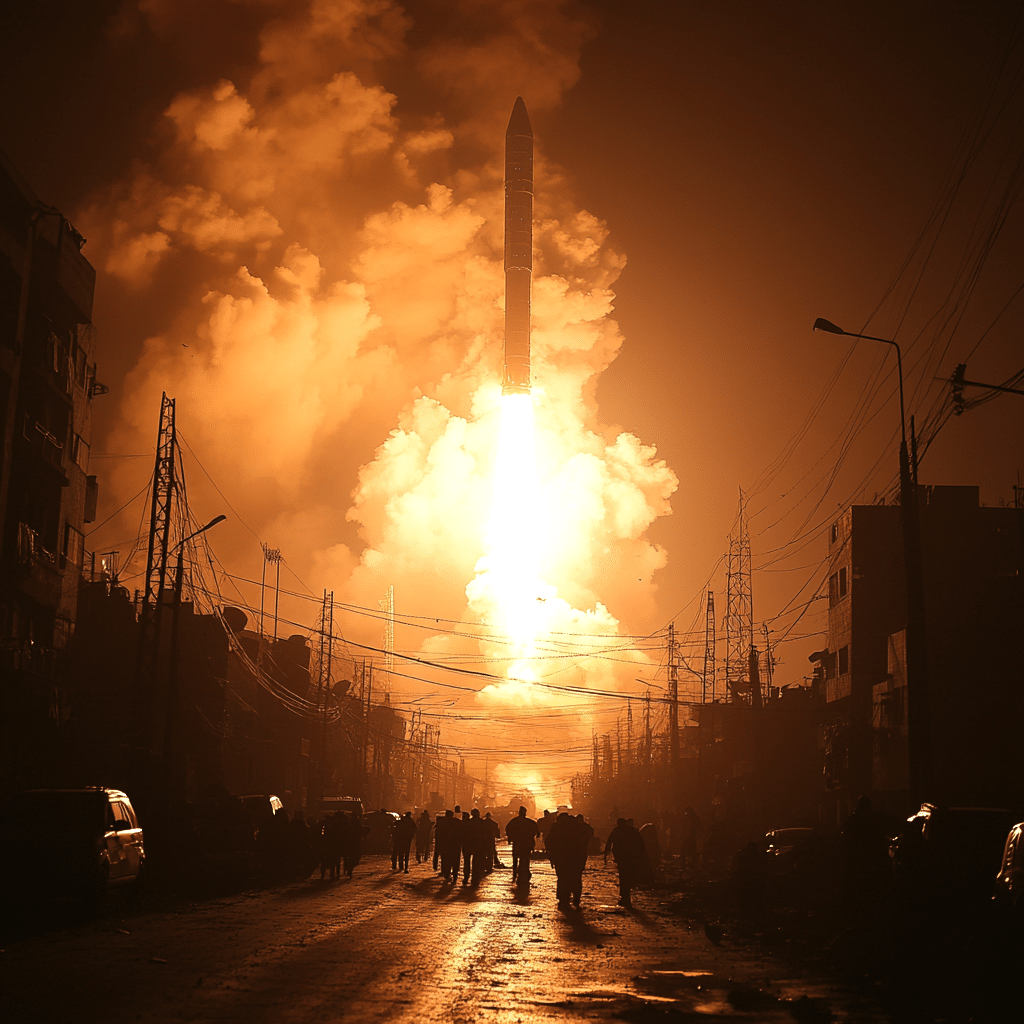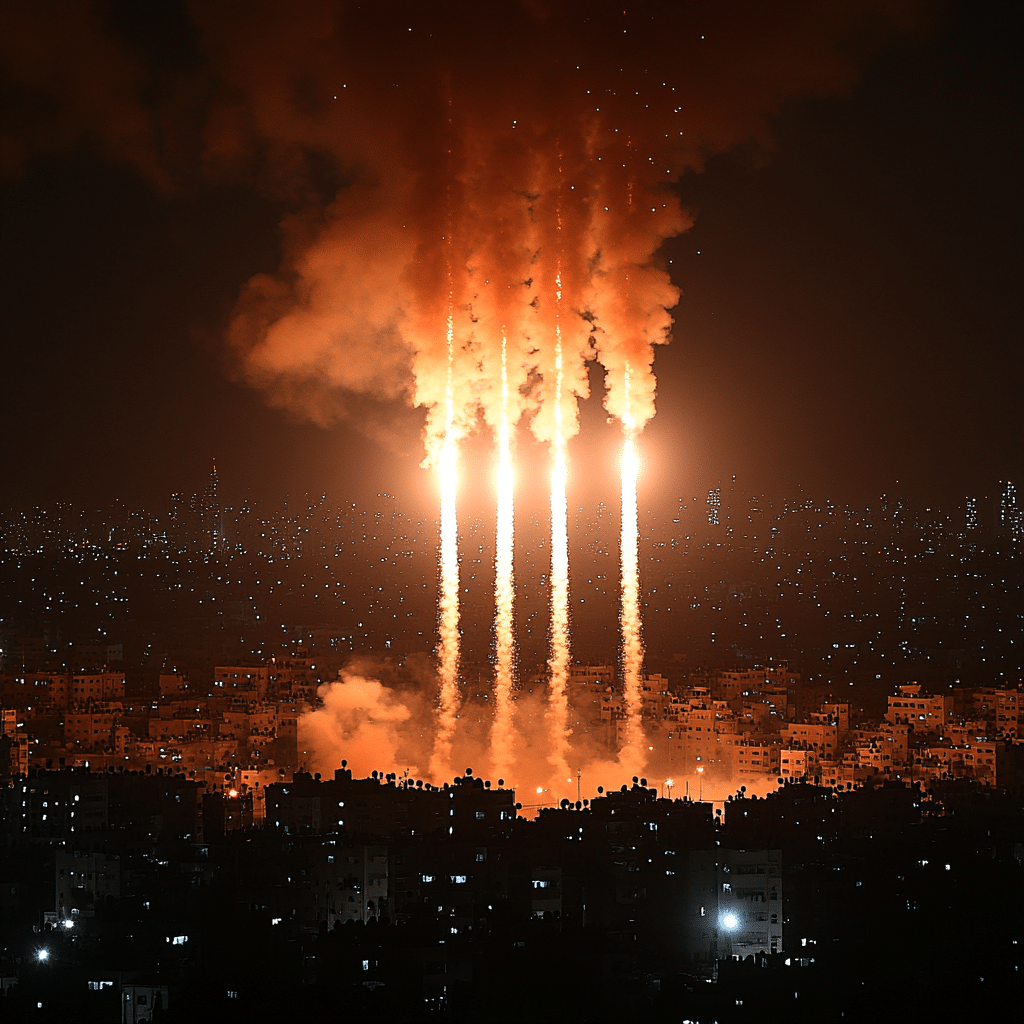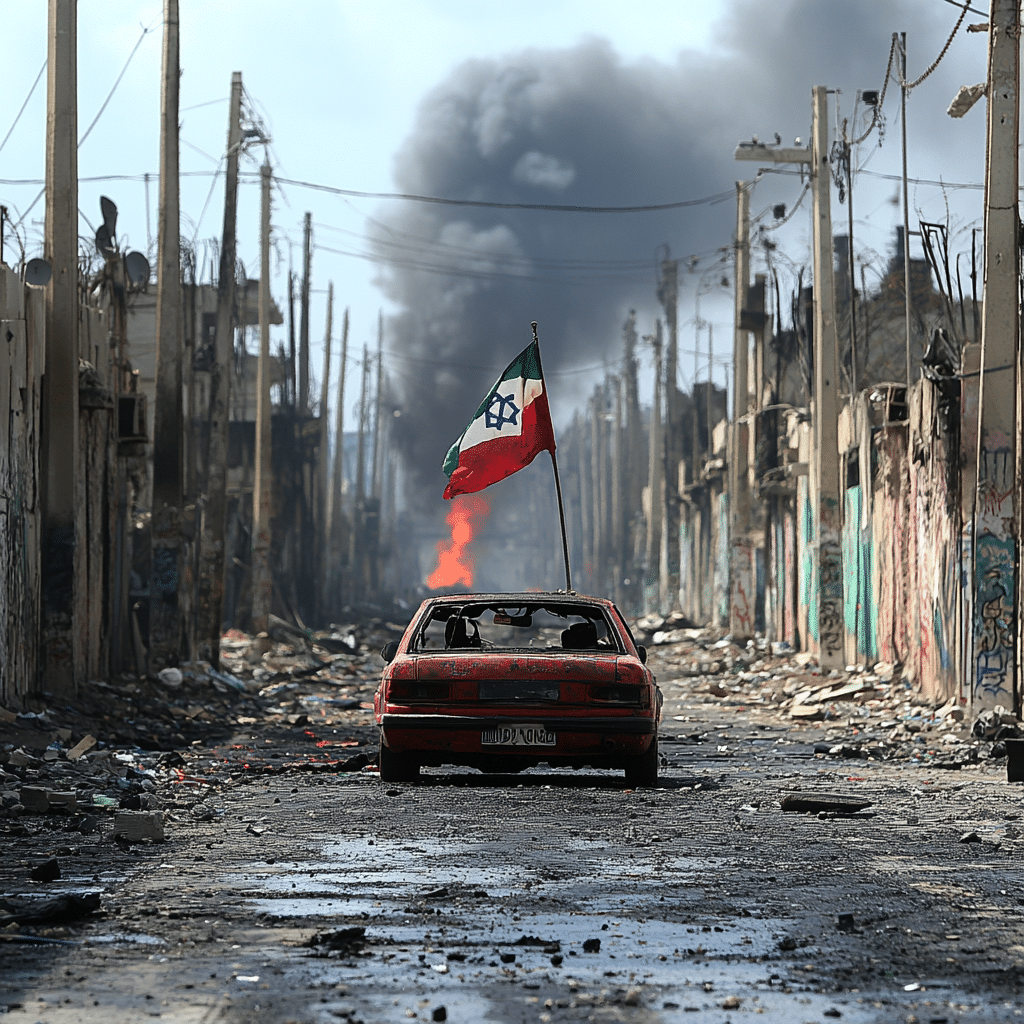The recent Israel Hamas ceasefire is a significant event that many hope may herald a new era in the long-standing conflict. As the dust settles from months of intense fighting, peace advocates and analysts alike are cautiously optimistic. With over 43,000 lives lost since the onset of hostilities on October 7, 2023, the urgency for lasting peace is palpable. This article provides an in-depth examination of the ceasefire agreement’s key aspects, its implications, and potential pathways toward genuine reconciliation in one of the world’s most volatile regions.
Key Aspects of the Israel Hamas Ceasefire: What You Need to Know
Historical Context
A brief history offers vital context to the current Israel Hamas ceasefire. The conflict dates back decades, with notable escalations occurring in 2008, again in 2014, and once more in 2021. Each clash earns a harrowing place in history, leaving behind lasting scars on both communities. Most recently, the armed conflict returned to devastating heights, marking the most severe military engagement since the Yom Kippur War in 1973. In this war alone, the civilian toll proves staggering—41,802 Palestinians and 1,706 Israelis have been reported dead, alongside numerous journalists and media workers.
Attempts at ceasefires in the past have often faltered under the weight of distrust. A significant standoff occurred in June 2008, with the breakdown of a truce after only hours, as Israeli forces opened fire on fishermen in Gaza. These failures highlight the fragile nature of any agreement made—one misstep can plunge the region back into chaos. As we move forward, understanding this historical context is crucial in evaluating the prospects for a genuine peace agreement.
The Ceasefire Agreement: Terms and Implications
Considered a beacon of hope, the ceasefire agreement drafted by mediators from Egypt and Qatar on May 5, 2024, brings forward a three-phase proposal. Key terms include a potential prisoner exchange and a mutual armistice. As part of this agreement, hostilities have officially ceased, while mechanisms for monitoring are set in place to stave off future violations. Both sides have indicated a willingness to adhere to these terms, if cautiously.
The geopolitical ramifications of the Israel Hamas ceasefire extend beyond the immediate players involved. Countries like Egypt and Qatar have long played mediating roles in this conflict. Their stake is not just in ending bloodshed but also in ensuring regional stability, which has implications for international relations throughout the Middle East. If this ceasefire holds, it may serve as a precursor to broader diplomatic negotiations, potentially changing the conversation around peace in the region.
Public Reactions and Grassroots Movements
Public sentiment around the ceasefire has varied between hope and skepticism. For many Israelis and Palestinians, the loss is still fresh, and the memories of past agreements gone awry loom large. Grassroots movements such as “Peace Now” and “Women Wage Peace” have risen and garnered attention, advocating for a future built on cooperation rather than conflict. These organizations demonstrate that there is a shared vision for peace among everyday people, starkly contrasting the divisiveness of political rhetoric.
Messages of unity and collaboration trickle down from these grassroots initiatives. Activists on both sides emphasize that the path to peace must include dialogue and understanding. The desire for a future free of violence resonates deeply within communities that have suffered extensively from this longstanding conflict, giving rise to new narratives of hope. As such movements gain traction, they may serve as a critical backbone for sustaining the current ceasefire.

Role of International Actors
The involvement of international players in the Israel Hamas ceasefire merits attention. The United States, United Nations, and European Union have all taken active roles in brokering this delicate agreement. Efforts from these entities, especially the U.S., which has long positioned itself as an ally to Israel, have been instrumental in promoting negotiations and minimizing hostilities.
However, these international actors face challenges moving forward. Skeptics argue that their influence may not be sufficient to ensure long-term peace. Age-old grievances and mistrust between both sides still linger, potentially undermining external efforts. The ongoing need to mediate and address humanitarian crises, particularly in Gaza, adds layers of complexity to an already intricate situation.
Potential Peace Pathways
Looking beyond the ceasefire, there are potential pathways toward lasting peace on the horizon. Dialogue initiatives, often facilitated by third-party countries, present opportunities for both sides to express their concerns and aspirations. The rise of technology has made this dialogue easier, creating channels where voices can be heard without the barriers that once divided them.
Innovative tactics, such as cultural exchanges and joint economic projects, embody the potential for real change. Experiences similar to those in Northern Ireland, where civil society played a pivotal role in building trust, could serve as a useful blueprint. The integration of these approaches, if embraced collectively, has the power to foster a culture of cooperation.
Lessons from Past Ceasefires: What Can be Learned from the Israel Hamas Ceasefire?
The Fragile Nature of Agreements
History teaches us that agreements can unravel easily. The breakdown of past ceasefires underscores the importance of establishing firm frameworks to deal with grievances and holding parties accountable for their actions. Further, the international community must be vigilant and proactive in ensuring that the terms of the current agreement remain viable. A lapse in commitment from either side could risk reigniting tensions that have only just begun to ease.
The Importance of Inclusivity
The Bolognia Agreement in Italy and the Good Friday Agreement in Northern Ireland serve as prime examples of successful conflict resolution. The key factor? Inclusivity. Incorporating diverse voices, including minority groups and women’s perspectives, bolstered the legitimacy of these agreements. A similar strategy in the Israel Hamas ceasefire could galvanize support for the negotiations and combat the pervasive skepticism surrounding the process.
Sustaining Public Support
Continuous public engagement proves vital in maintaining momentum for peace initiatives. Historical movements like the anti-apartheid struggle in South Africa demonstrated that sustained grassroots efforts could shift public attitudes over time. In this light, consistent campaigns emphasizing the benefits of peace and mutual understanding remain critical elements in fostering support for the arrangements set under the Israel Hamas ceasefire.

Challenges Ahead: Navigating Obstacles in the Israel Hamas Ceasefire
Extremist Factions
While the ceasefire currently holds, the challenge posed by extremist factions cannot be overlooked. Groups opposed to peaceful resolutions threaten to disrupt the fragile stability achieved thus far. On both sides, these factions often wield meaningful power, capable of reigniting violence or using the vulnerable as pawns in a game they play for influence and control.
Economic Instability and Humanitarian Needs
Critical humanitarian needs in Gaza continue to loom large. Reports indicate a pressing requirement for economic support and basic services that have long been neglected. Addressing these necessities is paramount in ensuring that citizens feel the tangible benefits of peace. Moreover, economic stability could incentivize both sides to adhere to the agreements made, easing fears of re-escalation.
A Vision for Lasting Peace Beyond the Ceasefire
The unfolding events surrounding the Israel Hamas ceasefire necessitate a forward-thinking approach that goes beyond temporary agreements. Visionaries from both communities must engage with one another, advocating for understanding and addressing grievances. As history unfolds, fostering grassroots cooperation and inclusive dialogue will be central in shaping a sustainable resolution that honors the aspirations of both Israelis and Palestinians.
While the current ceasefire indeed offers a shimmer of hope, it is the ongoing engagement of communities and leaders that holds the key to our future. The possibility of lasting peace remains formidable, but with concerted action and a focus on collaboration, it can become a reality rather than just an ideal. Only by unraveling the deeply woven fabric of conflict and stitching it together with threads of empathy and cooperation can we hope to see a truly peaceful resolution to the Israel Hamas ceasefire and, indeed, the enduring conflict that has plagued the region.
Israel Hamas Ceasefire: A Beacon of Hope
Intriguing Ties to History and Culture
The recent Israel Hamas ceasefire represents not just a break in violence, but an opportunity for a deeper conversation about peace and resilience. Speaking of resilience, did you know that the movie “Wheels,” which showcases determination amidst challenges, mirrors the struggles of those impacted by ongoing conflicts? Just as characters in stories find light at the end of the tunnel, so too might the Israeli and Palestinian communities discover new paths toward harmony.
As we delve into the context of the Israel Hamas ceasefire, it’s fascinating to note that cultural differences often fuel misunderstandings. For instance, in Japan, Fuufu Ijou Koibito Miman which translates to “more than husband and wife, emphasizes the importance of interpersonal connections. Building bridges in such a divided environment could echo the sentiments of coming together, just as some play sports to foster camaraderie—like those in the central warwickshire league who unite for competition and friendship despite differing backgrounds.
The Power of Sports and Symbols
Amidst conflict, sports often serve as a powerful tool for unity. Take Jackie Robinson, for example, who broke barriers in baseball while donning his iconic jersey. His story is a testament to how sports can pave the way for social change, much like a potential Israel Hamas ceasefire could pave the way for lasting peace in the region.
Interestingly, just as the brewing of Italian beer has become a beautiful craft, creating harmony between ingredients and flavors, peace-making efforts require a special blend of dialogue and goodwill. Alluding to fighters like Ismael Barroso, who bring passion to the ring, reminds us that conflict can take many forms—yet resolution, like a good brew, can be savored if crafted thoughtfully. Let’s hope that this ceasefire leads to greater understanding, cooperation, and peace in the troubled region.

What is the ceasefire deal with Israel Hamas?
The ceasefire deal involves a three-phase proposal for a prisoner exchange and an armistice to end the ongoing war between Israel and Hamas. Mediators from Egypt and Qatar drafted the deal on May 5, 2024, and it received endorsement from Hamas a day later.
Has Israel ever broke a ceasefire?
Yes, Israel has previously broken ceasefires, with reported violations occurring as early as the initial ceasefire in 2008, where Israeli forces opened fire on fishermen and farmers in Gaza shortly after the agreement went into effect.
What is happening between Israel and Hamas?
Since October 7, 2023, there’s been an armed conflict between Israel and Hamas-led militant groups, marking the fifth major war in the Gaza-Israel conflict and the most intense military activity in the area since the Yom Kippur War in 1973.
How many Israelis were killed by Palestine in 2024?
As of October 4, 2024, the death toll includes 1,706 Israelis reported killed due to the conflict with Hamas and other militant groups.
What is the US role in the Israel Hamas war?
The United States has played a role in mediation efforts and providing support to Israel, including military aid, while also encouraging peace talks and a resolution to the conflict with Hamas.
Does Hamas own the Gaza Strip?
Yes, Hamas governs the Gaza Strip and has significant control over the region since winning elections there in 2006.
Has Hamas broken every ceasefire?
While Hamas has violated ceasefires in the past, not every ceasefire has resulted in reported violations, as circumstances can vary based on the context and actions of both sides.
Did Hamas violate the cease fire?
Hamas has been accused of violating ceasefires during conflicts, which has strained relations with Israel and complicated peace efforts.
What is the objective of Hamas?
The primary objective of Hamas includes resisting Israeli occupation and establishing an Islamic state in historical Palestine, reflecting its political and militant goals.
Does Hamas still run Palestine?
Hamas is the dominant political party in the Gaza Strip and continues to exert control over the territory, often clashing with Palestinian Authority forces in the West Bank.
Is Hamas funded by Israel?
There are no credible reports that Hamas is funded by Israel; instead, it receives funding and support from various external sources, including Iran and other organizations sympathetic to its cause.
What religion is Hamas?
Hamas is an Islamic group, identifying as a Sunni Muslim organization that has roots in the broader Islamic movement.
Why is the Gaza Strip so important?
The Gaza Strip is important due to its strategic location, historical significance, and the ongoing humanitarian and political issues regarding the Israeli-Palestinian conflict.
Why are Israel and Palestine fighting?
Israel and Palestine are in conflict mainly over issues like land, borders, security, and the rights of Palestinians, fueled by deep-seated historical grievances and disputes.
Who Gaza death toll?
As per reports, the Gaza death toll has reached over 43,000, including a high number of Palestinian casualties amid the ongoing conflict.
What is the peace deal between Israel and Palestine?
Currently, there isn’t a comprehensive peace deal between Israel and Palestine, as various attempts over the years have failed to achieve lasting resolution or mutual recognition.
What is the CeaseFire line between Israel and Syria?
The Ceasefire Line typically refers to the boundary established for ceasefires in conflicts, particularly the one between Israel and Syria after the Yom Kippur War, which is often marked by military deployments and UN observations.
What is Hamas relations with Israel?
Hamas’s relations with Israel are characterized by hostility and ongoing conflict, with intermittent attempts at negotiation often undermined by acts of violence and military engagements.
Does Hamas still control Palestine?
Hamas still maintains control over Gaza, despite the ongoing conflict and challenges posed by both Israel and rival Palestinian factions.



